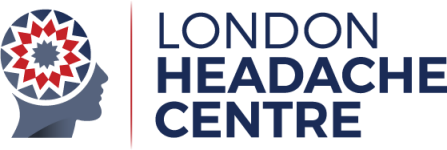In a blog published yesterday, I summarised the current medical and scientific literature on the known or suspected direct neurological effects of SARS-Cov-2. It’s a fast-moving situation: in the last 24 hours the New England Journal of Medicine, perhaps the most prestigious general medical journal there is, has published a letter from a team of French ITU doctors, in which they describe a high prevalence of confusion, agitation, and examination findings suggesting cerebral dysfunction. In those patients who underwent brain imaging, all showed frontal hypoperfusion, and two patients had experienced a small (non-symptomatic) stroke. Enhancement of the meningeal lining of the brain was seen in eight of the eleven imaged patients, but (crucially) SARS-Cov-2 RNA was not found in the CSF in any of the patients who underwent a lumbar puncture. As with previous reports, the authors conclude that it is very difficult to “determine which of these features were due to critical illness-related encephalopathy, cytokines, or the effect or withdrawal of medication, and which features were specific to SARS-CoV-2 infection”.(1)
The effects of Covid-19 on patients with neurological disorders extend well beyond the impact of infection on an individual patient. Many patients with neurological disorders are considered to be at high risk, particularly those which involve respiratory or cardiac muscles, or cause severe swallowing difficulties. The Association of British Neurologists (ABN) has published guidance on which of these patients should be shielded (that it, strict self-isolation for at least 12 weeks, with minimal contact even with those living in the same household).(2) These potentially include patients with motor neuron disease, severe muscular or myotonic dystrophies, severe neuropathies (particularly where there is autonomic involvement), neuromuscular junction disorders (such as myasthenia gravis), and those with advanced neurodegenerative disorders such as Parkinson’s disease. In addition, some neurological treatments may increase the risk of experiencing more severe symptoms if the patients contracts Covid-19. This includes combination therapies where patients are taking steroids alongside other immune suppressing medications such as azathioprine or methotrexate.
Specific advice has been issued on what to do with disease modifying therapies (DMTs) used to treat MS.(3) It has been recommended that new patients are not started on certain DMTs for the time being, though in most cases the risk of rebound disease if these medications are already being used is such that continuing treatment is generally advised. Where patients are on ocrelizumab, cladribine, or alemtuzumab, treatment may be delayed. Given the advice not to travel unless absolutely necessary, revised less intensive blood monitoring protocols has also been proposed.
There are risks arising from potential interactions between drugs being used in patients with Covid-19 and drugs used to treat neurological conditions, particularly with anticonvulsants such as carbamazepine (and its variants) and phenytoin.(4) Some medications being trialled, such as azithromycin or hydroxychloroquine, can directly worsen myasthenia gravis.
Whilst most patients with common neurological conditions such as migraine, epilepsy, and Parkinson’s disease are not high risk for Covid-19, the care of their neurological condition may nonetheless be adversely affected by the pandemic.(5) The diversion of NHS resources away from routine outpatient work to the frontline has meant that face-to-face interventions, such as Botox or greater occipital nerve blocks for patients with chronic or severe headache disorders, have been indefinitely put on hold. Neurology consultants have been diverted to support stroke services, and in some cases have been repurposed to frontline medical roles. In some centres, specialist nurses have had to return to the wards. GPs are overstretched with potential Covid-19 cases; telemedicine is not always suitable or possible for patients with certain neurological disorders; home visits have largely stopped. New treatments that would have become available at this time have also been delayed: for example, fremanezumab, the first of a new class of migraine treatments, should have become available through the NHS in England and Wales on 15th April, but that approval has also been put on hold. Clinical trials have been halted, and new trials delayed, with potentially devastating consequences for certain patients groups, such as those with brain tumours.(6)
Finally, there is concern that patients with potentially life-threatening acute neurological illnesses such as stroke are not presenting themselves to A&E departments, possibly through fear of contracting Covid-19. Stroke services have seen a significant drop in numbers. The stroke unit in Padua, Italy, have reported a 50% drop in TIAs and minor strokes versus the same period in 2019, a 30% reduction in the number of patients receiving thrombolysis, but a 40% increase in thrombectomies, “most of these patients had very serious strokes arriving late, sometimes too late”. (7)
The Covid-19 pandemic poses severe challenges to our models of neurological care. As the pandemic proceeds, and we get past the first wave of severe cases, we will all have to find ways of balancing the ongoing demands of the SARS-Cov-2 virus with those of our patients with acute and chronic neurological conditions. With these challenges, however, there will also be opportunities: the growth of the acceptability of, and familiarity with telemedicine, for example, may come to redefine how we monitor those with long-term conditions to everyone’s benefit.
References
- Helms J, Kremer S, Merjdi H, et al. Neurologic features in severe SARS-Cov-2 infection. New Eng J Med 2020. Published online, 15 April, 2020. doi: 10.1056/NEJMc2008597
- https://cdn.ymaws.com/www.theabn.org/resource/collection/65C334C7-30FA-45DB-93AA-74B3A3A20293/ABN_Neurology_COVID-19_Guidance_v6_9.4.20_FP.pdf
- https://cdn.ymaws.com/www.theabn.org/resource/collection/65C334C7-30FA-45DB-93AA-74B3A3A20293/02.04.20_ABN_Guidance_on_DMTs_for_MS_and_COVID19_VERSION_4_April_2nd.pdf
- https://www.covid19-druginteractions.org/
- Stoessl A, Bhatia K, Merello M. Movement disorders in the world of Covid-19. Mov Dis 2020. doi: 10.1002/mds.28069
- https://www.braintumourresearch.org/media/news/news-item/2020/04/06/cancer-survival-rates-under-pressure-from-covid-19
- Baracchini C, Pieroni A, Viaro F, et al. Acute stroke management pathway during Coronavirus-19 pandemic. Neurol Sci 2020. Published online, 9 April, 2020. https://link.springer.com/content/pdf/10.1007/s10072-020-04375-9.pdf
